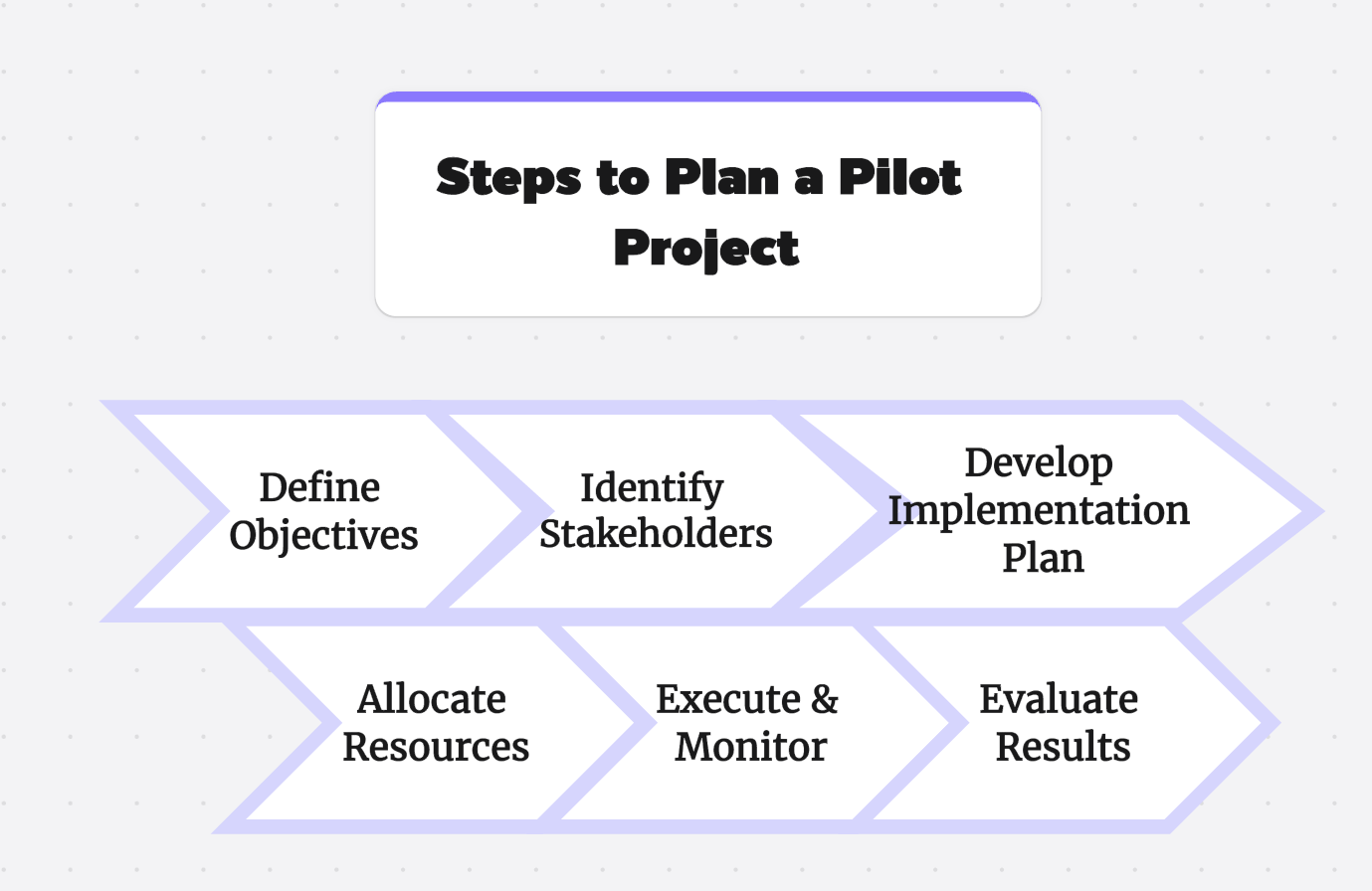In today's fast-paced business environment, pilot projects serve as a crucial tool for companies seeking to test new ideas or processes before full-scale implementation. This comprehensive guide will delve into what constitutes a pilot project, its benefits and challenges, and how you can effectively plan one. We'll also introduce Boardmix - an innovative online whiteboard tool that can revolutionize your pilot project management.
Part 1. What Is Meant by Pilot Project?
A pilot project is essentially a small-scale preliminary test or experiment conducted to evaluate the feasibility, duration, cost, adverse events, and statistical variability in outcomes of a proposed intervention or initiative.
When we talk about costs, it refers to the financial resources required to execute the pilot project. These could include costs for manpower, materials, technology, and other resources. By running a pilot project, organizations can get a clearer picture of the potential financial implications before scaling up.
Adverse events refer to any unexpected problems or issues that may arise during the execution of the project. This could range from technical glitches to human errors or even unforeseen external factors. The pilot phase allows these issues to be identified early on so that preventive measures can be put in place for the full-scale implementation.
Statistical variability in outcomes refers to the possible range of results that might occur from implementing the initiative. It's crucial because it provides an estimate of how much actual results might deviate from expected ones. By understanding this variability through a pilot project, organizations can better manage expectations and make more informed decisions.
The primary goal of a pilot project is indeed to identify potential issues and rectify them before committing substantial resources to full-scale implementation. It serves as a 'trial run' for organizations looking to implement new systems or processes on a larger scale - providing valuable insights and learnings which can help ensure that when the full roll-out happens, it is smoother and more likely to succeed.
Part 2. Benefits of a Pilot Project
implementation, indeed offer numerous benefits that can significantly impact an organization's success. These benefits span across various aspects of project management and execution - from risk mitigation and cost-efficiency to feedback collection and stakeholder confidence. Let's delve deeper into each of these benefits:
- Risk Mitigation: They allow organizations to assess potential risks before large-scale implementation.
- Cost-Efficiency: By identifying issues early on, they help save costs associated with widespread implementation.
- Feedback Collection: They provide valuable insights from end-users which can be used for refining the final product.
- Stakeholder Confidence: Successful pilots build stakeholder confidence in the proposed change.
By understanding and leveraging these benefits, organizations can significantly enhance their chances of successful project implementation while minimizing potential risks and costs - making pilot projects an indispensable tool in any change management strategy.
Part 3. Challenges for Pilot Project
While pilot projects are a valuable tool for organizations, they are not without their own set of challenges. These obstacles can range from the limited scope of the project to resource allocation and resistance to change. Understanding these challenges is crucial in effectively planning and executing a pilot project. Let's take a closer look at each of these potential hurdles:
- Limited Scope: The limited scope may not fully represent the complexities of full-scale implementation.
- Resource Allocation: Allocating resources for both regular operations and the pilot can be challenging.
- Resistance to Change: There may be resistance from employees who are comfortable with existing processes.
Part 4. Steps to Plan a Pilot Project
Planning a successful pilot project indeed involves several key steps, each of which requires careful thought and strategic planning. Let's delve deeper into each of these steps:
- Define Objectives: Establish clear, measurable, and achievable goals that the pilot project aims to fulfill.
- Identify Stakeholders: Recognize all individuals or groups who have a vested interest in the project, including team members, management, and end-users.
- Develop Implementation Plan: Create a detailed plan outlining the tasks to be completed, their timeline, and the individuals responsible for them.
- Allocate Resources: Determine and assign necessary resources such as time, money, and personnel for each task in your implementation plan.
- Execute & Monitor: Implement the pilot project while continuously tracking progress towards objectives and making necessary adjustments.
- Evaluate Results: Assess the outcomes of the pilot project against your defined objectives to understand its success and areas for improvement.
By following these steps meticulously and adapting as necessary based on ongoing evaluation results during execution phase, organizations can significantly increase their chances of running successful pilot projects.
Part 5: Plan and Manage Pilot Project with Boardmix
Boardmix is an innovative project management tool designed to revolutionize the way teams collaborate and manage projects. It provides a dynamic online whiteboard platform that allows for real-time brainstorming, planning, and tracking of projects. With its intuitive interface and extensive range of customizable drawing templates, Boardmix enables teams to visualize their ideas and project steps with clarity and precision. Whether you're managing pilot projects or conducting design thinking sessions, Boardmix transforms complex processes into manageable tasks, fostering effective communication and creativity within your team. Its commitment to continuous improvement and user-centric approach sets it apart in the market, making it an ideal solution for businesses seeking to streamline their project management processes.
Conclusion
Understanding what constitutes a successful pilot project is key in today's competitive business landscape - it helps mitigate risks while ensuring efficient resource allocation during full-scale implementation process changes or new initiatives within an organization. With tools like Boardmix at your disposal, managing these projects becomes significantly easier. Start leveraging the power of Boardmix today to streamline your pilot project planning and management.













